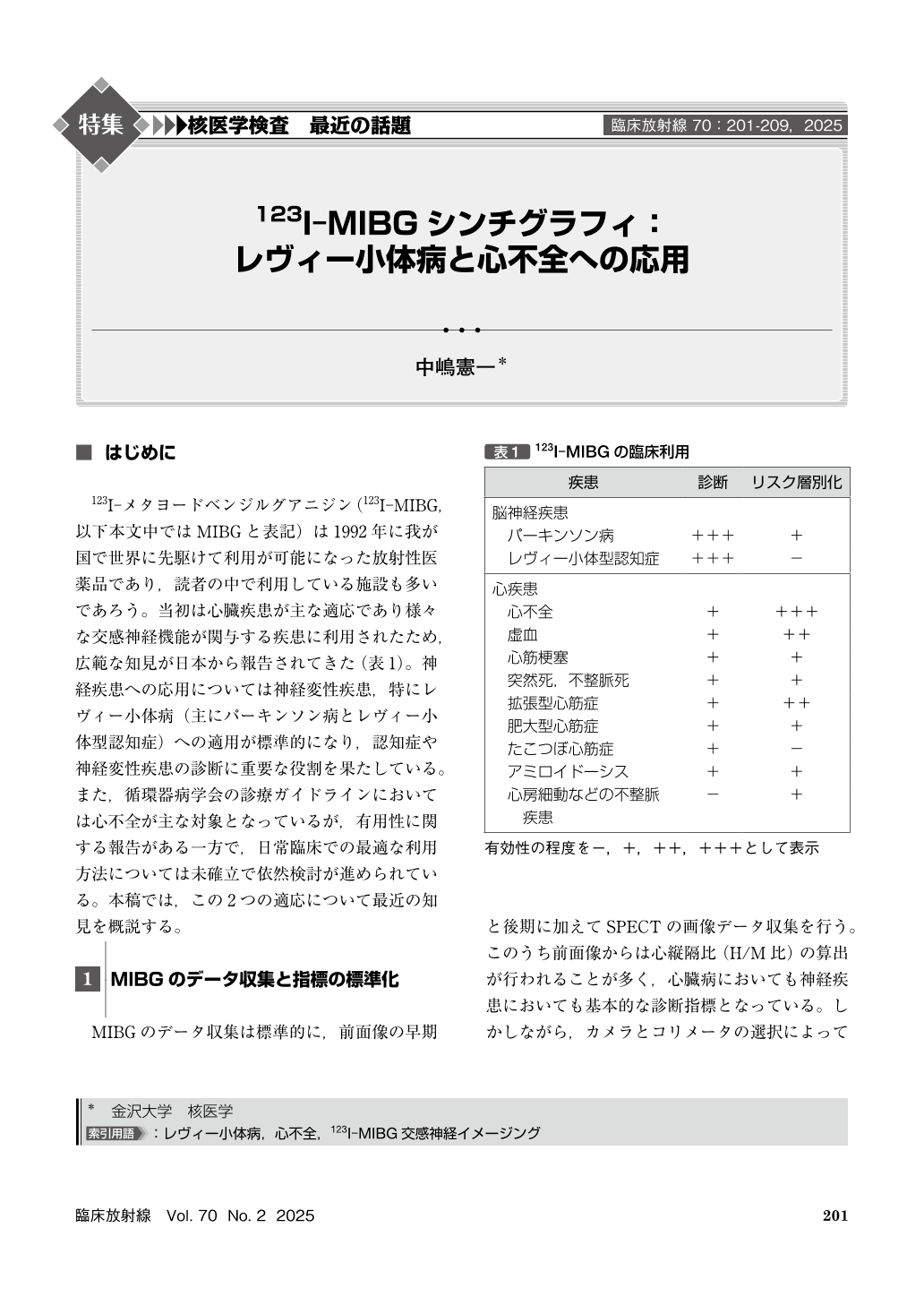Japanese
English
- 有料閲覧
- Abstract 文献概要
- 1ページ目 Look Inside
- 参考文献 Reference
123I-メタヨードベンジルグアニジン(123I-MIBG,以下本文中ではMIBGと表記)は1992年に我が国で世界に先駆けて利用が可能になった放射性医薬品であり,読者の中で利用している施設も多いであろう。当初は心臓疾患が主な適応であり様々な交感神経機能が関与する疾患に利用されたため,広範な知見が日本から報告されてきた(表1)。神経疾患への応用については神経変性疾患,特にレヴィー小体病(主にパーキンソン病とレヴィー小体型認知症)への適用が標準的になり,認知症や神経変性疾患の診断に重要な役割を果たしている。また,循環器病学会の診療ガイドラインにおいては心不全が主な対象となっているが,有用性に関する報告がある一方で,日常臨床での最適な利用方法については未確立で依然検討が進められている。本稿では,この2つの適応について最近の知見を概説する。
123I-MIBG sympathetic imaging is primarily used to evaluate Lewy body diseases and heart failure. In neurology, 123I-MIBG effectively distinguishes Parkinson’s disease from Parkinsonian syndromes and dementia with Lewy bodies from Alzheimer’s and non-Lewy dementias. A novel index, SMILe, has been introduced for estimating probability of Lewy body diseases. In cardiology, diagnostic and prognostic applications using 123I-MIBG have focused on innervation in ischemic heart disease and cardiomyopathies. Notably, multivariable risk models, such as smartMIBG-HF software, show promise for cardiac mortality risk stratification. Machine learning is being explored to enhance predictive accuracy using multivariable models, advancing the clinical utility of 123I-MIBG imaging.

Copyright © 2025, KANEHARA SHUPPAN Co.LTD. All rights reserved.


